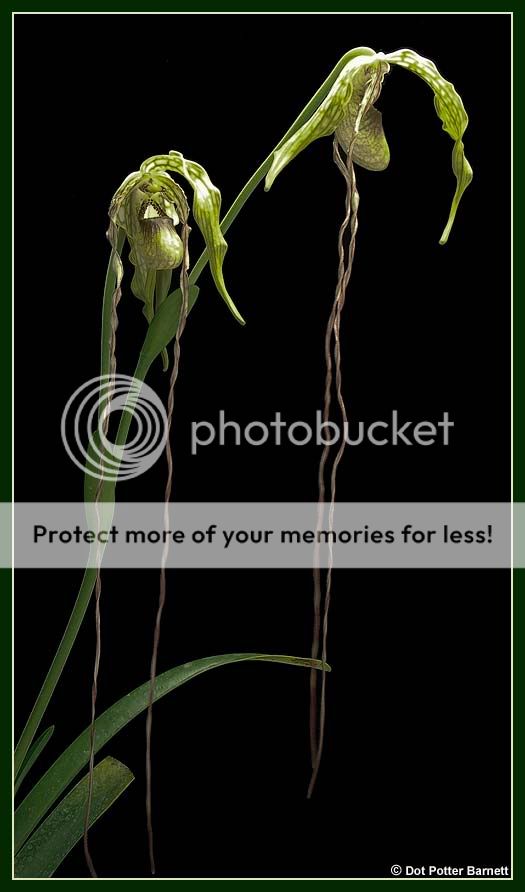SlipperFan
Addicted
So what makes v. sanderae different from regular caudatum? I'm still a little confused.















You have to ask the guy who named it that way. It is a horticultural designation and 'sanderae' should be regarded as such (if at all).So what makes v. sanderae different from regular caudatum? I'm still a little confused.

Very nice flower, but the var. Sanderae I use to know is the paler form of caudatum and it's suppose to be green, yellow and white...
That one is looking like a caudatum...
That sounds like the description of warszewiczianum/wallisii.
Thanks, everyone. Someday I'll get all these names straight in my database and on my tags.
Thanks, Rick.Besides the pale color, warszewiczianum has some structural differences of the flower too. Lack of hairs on the edge of pouch, more flared out pouch opening.
There's probably a lot of individual variation in caudatum in the degree of brown from population to population as well as the same plant from season to season. Just think of the color variation we've seen from a single longifolium plant as it blooms at different times of the year.
Grow this one brighter and with a different food, and it may well produce a paler flower more typical for a sanderae. I prefer darker flowers, I think its pretty neat as is.
Olaf, are you saying I should drop the "V. sanderae" and just call it "caudatum"?There were different colourtypes in trade as var. sanderae or sanderianum.
A variety was never described officially, but any plants cami in trade with this name.
So I saw pale caudatum, greenish caudatum and the hit a very bad crippled one in bad culture but with a high price for this rare 'variety'.
When you have no definition by a description please use this name not as a variety, only as a clonal name. When the difference would be really so great then somebody woul describe it. But nobody has done it, also when the tradename is now near 50 years old.
Best greetings
Olaf